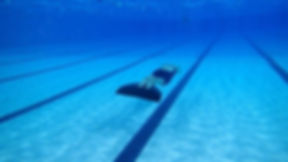


Bristol Freedivers
What are AP's and PB's and why do you need them?
AP is not the time or distance you expect to do on the day.
AP stands for 'Announced Performance' and is used to work out the running order of athletes for each discipline, lowest starts first. If you want to go in one of the early heats, put a low AP, if you want to wait until later then put a higher AP. However, penalty points will be awarded if an athlete does not achieve the AP time/distance so my advice, do not put something you can't achieve or an AP that will put pressure on you.
PB is simply 'Personal Best'. We ask for this so the Judges and Safety Divers have a better idea of what you are capable of so know when to potentially intervene and when to let things carry on.
Friendly advice: Do not submit an AP bigger than your current PB.
Can I change my AP's after registering?
Yes - you can change your AP's up to 1 week before the competition. After that the starter list, Top Times and running order will be worked out and published during the week before competition. Email your change of APs to BristolBlueComp@Gmail.com
Can I switch from No Fins to Mono to Bi-Fins (or Visa Versa) in the dynamic discipline?
Yes - in the same way as changing your AP's, you can switch from No-Fins to Mono to Bi-Fins or visa versa up to 1 week before the competition. After that it will be fixed and announced on the starter list. Email your update to BristolBlueComp@Gmail.com
Can I do a Mono kick in the Bi-Fins discipline?
No. If you enter the DYN Bi-Fins category then you can only do Bi-Fin kicks. Any Mono technique will result in disqualification.
If I enter the DYN Mono discipline, can I wear Bi-Fins?
Yes – and you can also use a Mono technique while wearing Bi-Fins. Provided you are in the DYN Mono category, not DYN Bi-Fins you can use a Mono technique.
What changes are there in the new AIDA rules?
The rules are regularly updated by AIDA. A copy of the latest rules can be found on the Forms and Rules page.
What are the rules on Blackouts?
If an athlete suffers a BO, the following definitions and restrictions will be applied:
-
Mild (Surface BO, less than 10 seconds to recover): no more diving on the same competition day, medical check-up on next day in the morning. Able to compete on day 2 with medical sign off.
-
Moderate (Underwater BO or 10-20 seconds to recover): minimum of one rest day (day of BO and day after), medical check-up 24 hours after BO, and the next morning before entering the competition again. In the case of any abnormal signs or symptoms there will be no more diving in the competition.
-
Severe and extremely severe: no more diving in the competition and medical follow up until the end of the competition with a recommendation for follow up with their personal physician after the conclusion of the competition.
What that means for the Bristol Blue:
-
If an athlete has a Mild Black Out during their STA performance they will need to check with the medic but will not be allowed to compete in any dynamic discipline in the afternoon. No exceptions will be made.
-
If an athlete has any Black Out during their dynamic performance they will be required to check with the medic for an assessment before being allowed to change or leave the venue.
-
This is for the safety of the athletes.
Surface Protocol clarification
During the SP, a facial wipe and / or the removal of the hood / swim cap will not result in disqualification. Although, if repeated this will result in disqualification. An athlete should not be disqualified by making himself more comfortable during recovery.
An OK-sign is considered to be given when the tip of the thumb and a finger are in contact.
Visual OK-signs given simultaneously with both hands, repeating of the visual OK-sign after releasing it, or putting the OK-sign below the surface of the water and bringing the sign back out of the water, or repeating of the visual OK-sign with the other hand are considered as a double OK sign and thus result in disqualification.
Movements of the hand giving the visual OK-sign are not considered as multiple OK-signals and are allowed, provided the thumb and finger do not lose contact.